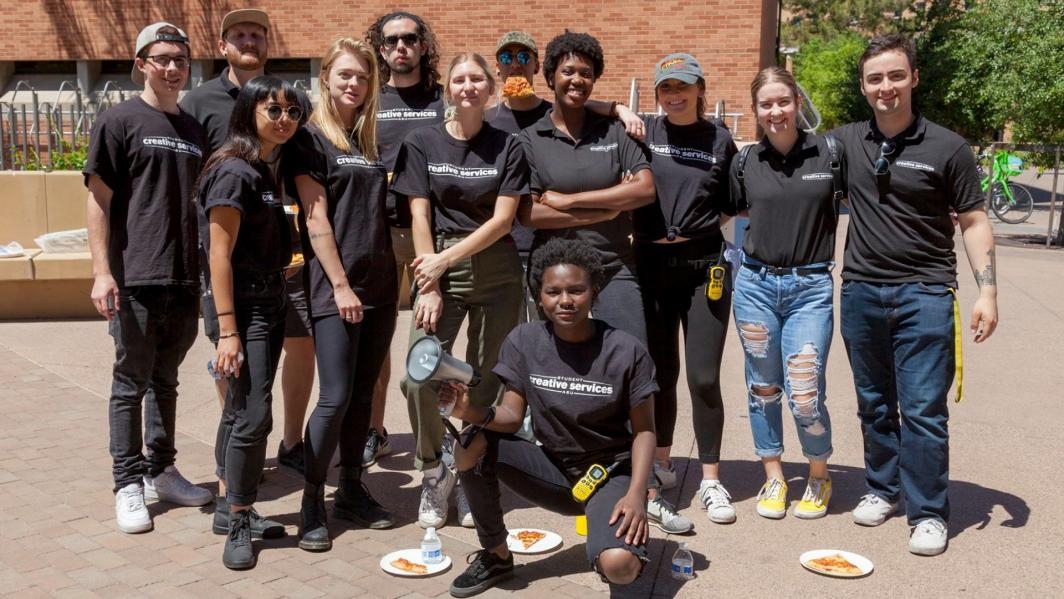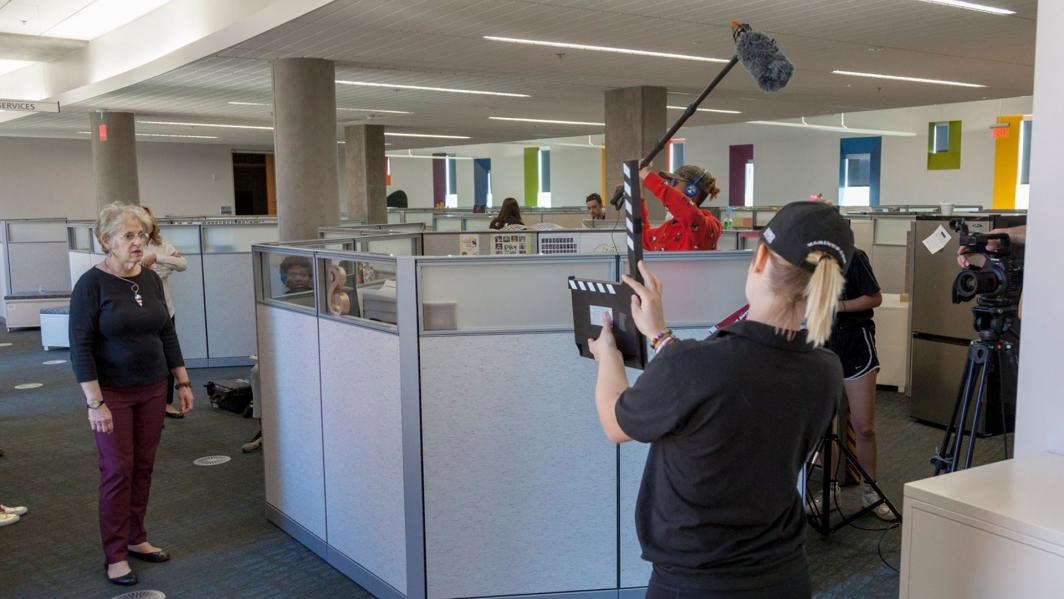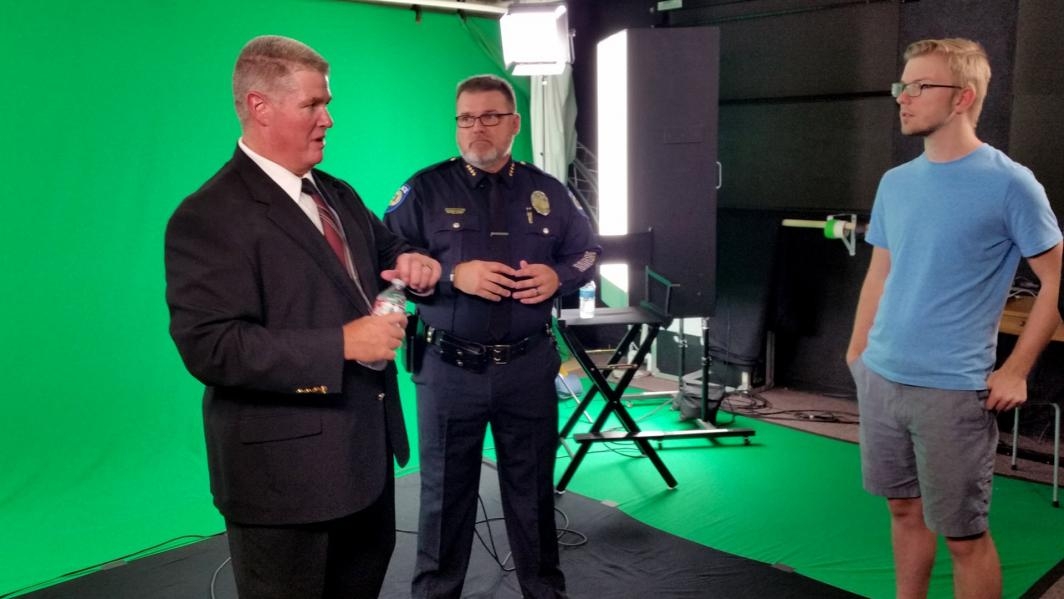New ASU active-shooter preparedness video unveiled
Students take two-year project across the finish line
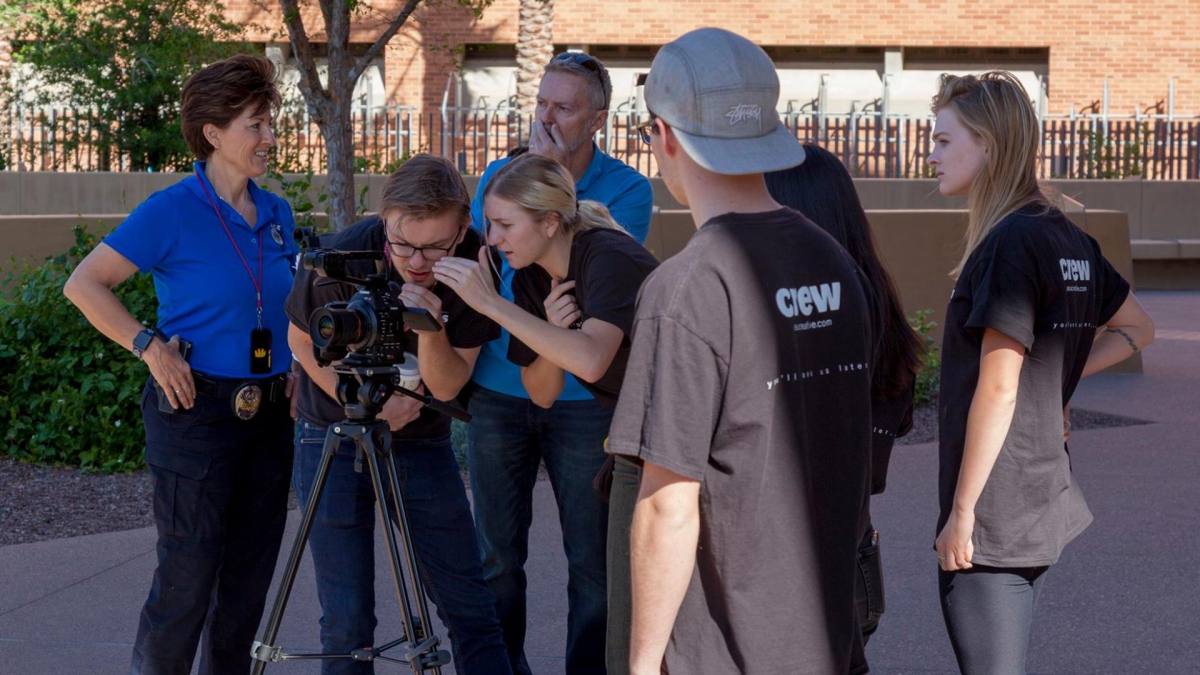
Students Jacob Kaufman and June Hucko of ASU Student Creative Services review a shot during the filming of the active-shooter preparedness video as crew members, ASU Police Officer Becky Garcia and Rick Bauer of the ASU Environmental Health and Safety Office look on. Kaufman served as the video director and Hucko as director of photography. Garcia starred in the film, and Bauer was the project manager and executive director. Photo courtesy of ASU SCS
Statistically the chance of someone being in an active-shooter event are small. Equally small is the chance of a being in a commercial plane crash, yet flight attendants still brief passengers on safety procedures before a flight to instill a survival mindset.
Arizona State University Police Chief Michael Thompson made that analogy after the unveiling of a student-produced active shooter video to university stakeholders Nov. 7 at the Tempe campus Memorial Union.
“They don’t anticipate the plane crashing, I hope, but they practice it and they talk about it because there is a chance,” Thompson said. “The same thing here, we just want to make sure that people are aware of their surroundings and what is going on.”
The new video emphasizes the “run, hide, fight” concept, but it also indirectly helps instill a higher sense of awareness to avert a crisis. Someone behaving in a peculiar way, such as walking around in the middle of summer wearing a trench coat, could be a sign, Thompson said. Past mass shootings in the U.S. were often preceded by warning signs noticed by people who came in contact with the shooter.
“It is really important that if you know of something that might be percolating, say something,” Thompson said. “People don’t just snap; there is a buildup."
It is a grim subject and not an easy one to talk about, but active shootings have become a part of daily life, said Becky Garcia, ASU Police crime prevention officer. As shooting incidents become more prevalent, preparedness is key.
“That’s the message in this video,” Garcia said. “The messaging is not to scare people but to share the options, so that way we can all have the mindset and know the options, and have that survival mindset no matter where we are.”
The video is brief and people may walk away with more questions than answers after watching it, Garcia said. That is why it is important for the ASU community to also sign up for the in-person, interactive classes offered on campus.
“It takes about an hour,” Garcia said. “We have the opportunity at that point to answer from the law enforcement perspective any questions that might arise.”
The idea of creating an ASU-specific video started two years ago, said Allen Clark, executive director of preparedness and security initiatives at ASU. It came about in part by seeing other universities create their own active-shooter safety videos, combined with faculty input on the best way to present this type of valuable safety information to students.
Early on, the idea was to engage students to be part of the video, since they are more in tune with other students and understand their viewing habits. It was also cost-effective.
“We went to Student Creative Services; we launched, and off we went,” Clark said. “I think we came up with an extremely good video.”
ASU Student Creative Services Director Dan Dickson guided the student team that managed the major production aspects of the video. Rick Bauer, workplace safety training manager with ASU’s Environmental Health and Safety Office, led the overall project, which entailed coordinating with university stakeholders and arranging support from many others, including outside agencies like the Tempe Fire Medical Rescue Department.
A project of this magnitude meant the students had to balance managing a large crew and cast while tackling other aspects of the video production, which ranged from working with parameters set forth by university leadership to the many rewrites that helped refine the script.
“It was a huge challenge,” said student June Hucko, an ASU SCS media production associate who served as director of photography for the video. “But it was very rewarding because we still found a way to make it creative and keep people engaged and help them learn about what to do in this kind of situation.”
More University news

College of Global Futures announces new directors
As the academic home to those tackling some of our planet’s most urgent challenges, the College of Global Futures at Arizona…
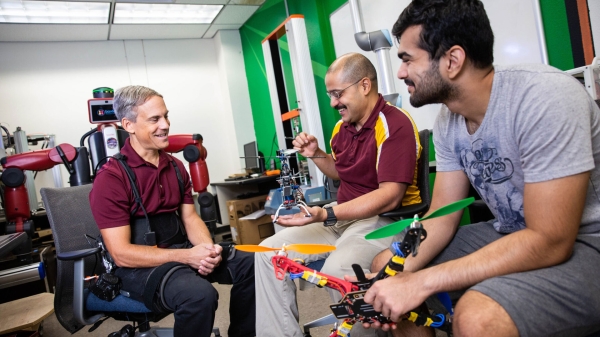
Reaching new heights in robotics
In the halls of the School of Manufacturing Systems and Networks, part of the Ira A. Fulton Schools of Engineering at Arizona…
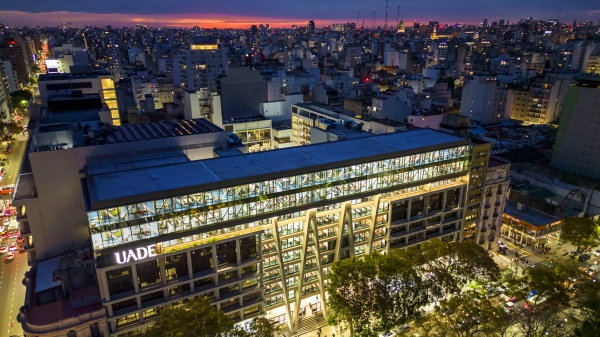
ASU brings advanced AI and VR training to over 2,000 faculty in Argentina
How does technology transform our ability to learn? In the evolving landscape of education, artificial intelligence and virtual…
